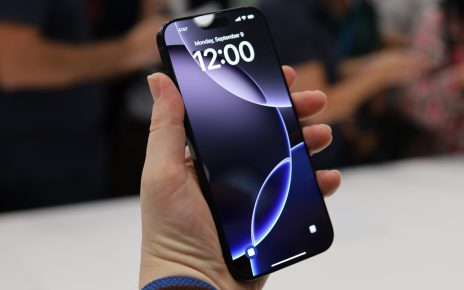Introduction to Snapdragon X processors and their capabilities
The tech world has been buzzing about laptops with Snapdragon X processors, promising a new era of performance and efficiency. These innovative chips were designed to revolutionize mobile computing, boasting capabilities that could rival traditional laptop processors. With claims of superior battery life, seamless multitasking, and lightweight designs, many thought these devices would change the game for on-the-go professionals and casual users alike.
But as the dust settles on this much-anticipated launch, reality paints a different picture. Users have experienced unexpected challenges that have raised eyebrows across the board. So what went wrong? Let’s delve deeper into the promises made by manufacturers and uncover why laptops with Snapdragon X processors may not have lived up to expectations.
Promises made by manufacturers regarding laptops with Snapdragon X processors
Manufacturers touted laptops with Snapdragon X processors as the next big thing. They promised incredible battery life, enabling all-day productivity without needing a recharge. This was particularly appealing for professionals on the go.
Speed and performance were also at the forefront of these claims. Companies assured users that they would experience seamless multitasking and lightning-quick app launches. Many believed this could finally rival traditional laptop processors.
Additionally, manufacturers emphasized built-in connectivity features like 5G capability. The idea of staying connected anywhere made these devices sound revolutionary.
However, excitement quickly turned to skepticism as real-world performance began to differ from expectations. Users found themselves questioning whether those lofty promises could truly be met in everyday use scenarios.
Issues faced by users with these laptops
Users have reported several issues with laptops featuring Snapdragon X processors. Many experienced sluggish performance during demanding tasks. Despite promises of superior speed, the reality often fell short.
Battery life, initially touted as a strong point, has also disappointed some users. While energy efficiency is a key selling feature, mixed reviews suggest it doesn’t always translate into extended use.
Compatibility problems plague many applications too. Users found that popular software didn’t run smoothly or required workarounds to function effectively on these devices.
Another concern involves thermal management. Some models tend to overheat under load, leading to throttled performance and discomfort during long sessions.
Customer support experiences vary widely among manufacturers. Frustration arises when users seek help for persistent issues but encounter unresponsive service teams or lengthy waits for solutions.
Comparison with other laptop processors
When comparing laptops with Snapdragon X processors to their Intel and AMD counterparts, certain distinctions emerge.
Intel’s Core i7 and i9 series dominate in raw performance. They excel in heavy multitasking and high-end gaming scenarios. In contrast, Snapdragon X chips focus on efficiency rather than sheer power.
AMD’s Ryzen processors also hold a significant edge in graphics capabilities. Their integrated Radeon graphics often outperform those found in Snapdragon devices, making them better suited for creative tasks.
Battery life is where the Snapdragon shines brighter. Its architecture allows for extended usage without frequent charging—an appealing factor for mobile professionals.
Yet, when it comes to software compatibility, many users find that traditional x86 applications run more smoothly on Intel or AMD systems. This can lead to frustration among those who depend on specific programs for work or play.
Each processor has its strengths and weaknesses; understanding these can guide buyers toward the best choice for their needs.
Impact on user experience and productivity
The impact of laptops with Snapdragon X processors on user experience has raised significant concerns. Many users anticipated seamless performance but found themselves dealing with unexpected slowdowns.
Tasks that should be simple, like browsing or streaming, often lagged. This can frustrate those who rely on their laptops for work or study.
Productivity took a hit as well. Users reported difficulties in multitasking, which is crucial for professionals juggling multiple applications. The promise of efficient power management fell short when it led to slower response times during critical moments.
Battery life claims didn’t always translate into real-world usage either. Instead of extended hours, many faced the need to recharge more frequently than expected.
For creative tasks and heavy software use—like graphic design or video editing—the shortcomings became even more pronounced. A device that was supposed to enhance productivity often ended up being a barrier instead.
Alternatives for those looking for powerful laptops
For those searching for powerful laptops, several alternatives stand out. The Intel Core i7 and i9 processors are popular choices among professionals and gamers alike. Their performance is robust, delivering speedy multitasking and high frame rates in demanding applications.
AMD’s Ryzen series also deserves attention. The Ryzen 7 and 9 chips offer excellent power efficiency without compromising performance. Creative tasks like video editing run smoothly on these machines.
If portability is a priority, consider ultrabooks with M1 or M2 chips from Apple. These devices combine power with lightweight designs, perfect for users who need to work on the go.
Gaming enthusiasts might explore options equipped with NVIDIA’s RTX graphics cards paired with strong CPUs. This combination enhances gaming experiences significantly while ensuring smooth operation across various titles.
Explore these alternatives to find a laptop that aligns perfectly with your needs!
Conclusion and recommendations for potential buyers
As potential buyers navigate the market for laptops with Snapdragon X processors, it’s essential to weigh their options carefully. The promise of powerful performance and efficiency has drawn many users in, but the reality has often fallen short.
For those looking for reliable productivity tools, it might be wise to explore alternatives that offer proven performance. Traditional laptop processors from Intel and AMD have consistently delivered robust capabilities across a range of applications. These options may provide better compatibility with software and improved overall user experience.
Additionally, consider your specific needs. If you prioritize battery life or portability over raw power, then some models featuring Snapdragon X could still meet your requirements. However, for tasks demanding high processing power—like gaming or video editing—you might want to steer clear of these devices until improvements are made.
Being informed about both the advantages and drawbacks can help you make a smart choice when selecting your next laptop. Prioritize what matters most for your use case before committing to any particular model.



